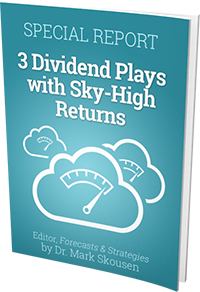This article features four option spread strategies and is part of an eight-story series that continues from a previous article.
This write-up presents option spread strategies 13-16 from my total of 29 combinations, with each intended to address a specific trading opportunity. Some of the strategies are quite risky, so consider your personal tolerance for losing money before trying any of them.
13) Ratio Spread
A ratio spread trade involves buying in-the-money calls and selling more out-of-the-money calls than the in-the-money calls you bought. I could buy one in-the-money call option and sell two out-of-the-money call options. I also could buy two in-the-money call options and sell three or five out-of-the-money call options.
This is how the strategy gets the name ratio spread trade. Ratio spread is generally a neutral market strategy. I am expecting the price of the underlying security to remain relatively unchanged in the near term.
A call ratio spread could use a two-to-one call ratio. I could buy calls at a lower strike price. Then, I would sell two times the number of calls at a higher strike price.
I get maximum profit when the price of the underlying security expires at the strike price.
The written calls will become completely worthless. I collect the premiums for selling those calls. The long call generates profit when it expires in the money.
If the price increases well above my break-even point, I am exposed to virtually unlimited loss. In that case, I must come up with the shares or the funds for the two out-of-the-money calls I sold.
The only positive side of a call ratio spread is that it carries very little risk if the underlying security price takes a nosedive and drops. Call ratio spread is a good trade to enter a market that has either a downward or a neutral bias.
However, stay away from this strategy if there is any chance that the price of the underlying security might go up for any reason.
14) Short Butterfly
The short butterfly is a good spread trade for securities that are expected to experience volatility. I select three strike prices for my options. I sell one in-the-money call and I sell one out-of-the-money call. I also buy two at-the-money calls.
|
BUY |
SELL |
| 2 at-the-money CALLS |
1 in-the-money CALL |
|
1 out-of-the-money CALL |
There are two ways to profit from a short butterfly. I profit if the price of the underlying security goes higher than the higher strike price or if it goes below the lower strike price at the expiration date.
The premium I receive for selling the in-the-money call and the out-of-the-money call — minus commissions — is my maximum potential gain.
If the price does not move, only the lower strike and call that was shorted expire in the money. I must buy back that call and pay for its intrinsic value. While my risk is limited, so is my upside potential.
15) Short Condor
The short condor strategy is well suited for markets with expected volatility. With this strategy, I expect a significant move one way or the other. The short condor is a limited risk strategy. However, the potential profit is limited as well.
A short condor requires several trades. I sell one out-of-the-money call at a higher strike price. I also buy one out-of-the-money call. I further sell one in-the-money call at a lower strike price and I buy one in-the-money call.
|
BUY |
SELL |
|
1 out-of-the-money CALL |
1 out-of-the-money CALL
at a higher price |
| 1 in-the-money CALL |
1 in-the-money CALL at a lower price |
I earn my maximum possible profit by collecting the premiums for selling the two calls. If the underlying security stays between the strike prices of the lower long call and the lower short call, then I suffer my maximum loss.
16) Short Put Butterfly
Another strategy for markets with expected volatility is the short put butterfly. This is yet another limited profit and limited risk strategy. I execute three trades for this strategy. I sell one in-the-money put and I buy two at-the-money puts. I also sell one out-of-the-money put.
| BUY |
SELL |
|
2 at-the-money PUTS |
1 in-the-money PUT |
|
1 out-of-the-money PUT |
I get a net credit to enter this trade. The optimal outcome for me will be if the price of the underlying security moves outside of the trade zone marked by the strike prices of the puts. I will earn my maximum profit from selling the in-the-money put and the out-of-the-money put — minus any commissions.
If the price of the underlying stock or security remains relatively steady, my downside limit will be higher than my profit potential. In that case, I must buy back the out-of-the-money put I sold.
The short put butterfly is a reasonable spread trade. The strategy works well for markets where there is an expectation of significant movement of the underlying security’s price.
The next article will be part 6 in my eight-part series and provide option spread strategies 17-21.

Billy Williams is a 25-year veteran trader and author. For a free strategy guide, “Fundamentals for the Aspiring Trader”, and to learn more about profitable trading, go to www.stockoptionsystem.com.


